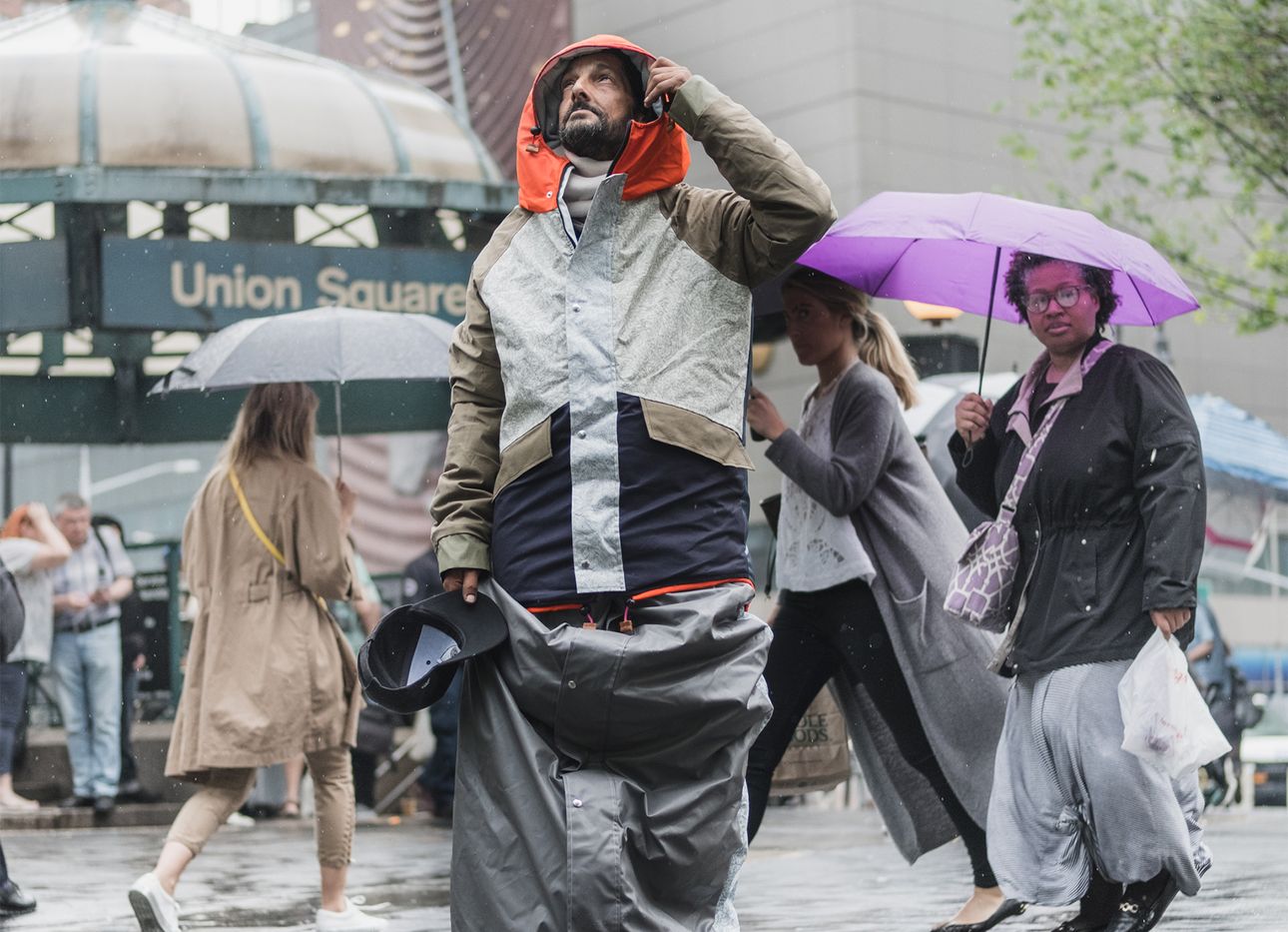
A Fashion Designer Transforms Deadstock Textiles and Upcycled Sleeping Bags Into Wearable Life-Saving Shelters
While producing a line of luxury outerwear, Dutch fashion designer Bas Timmer learned that the homeless father of two of his friends had passed away from hypothermia while waiting in front of a shelter that was at capacity. The news jolted Timmer into action: Using an old tent and sleeping bag, he stitched together a jacket that zipped onto a cocoon-like bottom, took it to a local shelter, and offered it to a man sitting outside. The man’s grateful reaction to the garment led Timmer to make more of the outfits, which he dubbed Sheltersuits, and in 2014, to found the Sheltersuit Foundation as a means of producing the pieces on a larger scale. Since then, the organization has given away more than 12,500 Sheltersuits to people experiencing homelessness in Germany, Greece, Italy, the Netherlands, the United Kingdom, South Africa, and the United States.
Each suit symbolizes Timmer’s goal of helping people and the planet. Sheltersuit’s factory in Enschede, the Netherlands, primarily employs Syrian refugees, and also works with students, volunteers, and people with disadvantages in the job market, teaching them how to tailor and sew. Except for the hardware, all materials—high-quality deadstock textiles, upcycled sleeping bags and tents—are donated. The initiative’s flagship ensemble, made for enduring cold winters, has evolved since the initial prototype. It now consists of a wind- and waterproof jacket with an integrated scarf and a large hood to shield the face, and there’s a Velcro-lined opening at the end of the sleeping bag so one can walk while wearing it. The whole thing rolls up into a backpack for easy transport.
Production has progressed, too. Two years ago, Sheltersuit opened a facility in a suburb of Cape Town, South Africa, that acts as a temporary shelter and focuses on reintegration into society. Guests receive support in their search for housing and learn how to sew by making Shelterbags, a version of the suits made for warmer climates. Lightweight, waterproof, and windproof, the attire acts as a portable tent with its built-in pillow, stow sack for belongings, and space for padding in its sleeping bag. A flexible tent pole keeps the suit’s hood upright.
Sheltersuit’s recent collaborations further attest to the garment’s potential. Last month, just before Paris Fashion Week, Sheltersuit’s collaboration with the high-fashion brand Chloé (whose creative director, Gabriela Hearst, was the guest on Ep. 32 of our Time Sensitive podcast) debuted at a pop-up in the French department store Le Printemps. Limited-edition jackets and backpacks, made with the usual upcycled materials as well as leftover fabric from previous Chloé designs, are part of the house’s fall/winter 2021 collection. (The sale of each backpack finances two Sheltersuits, which will be distributed in the U.S. and France in partnership with local NGOs.) In a few weeks, Timmer and Robbert van Trooijen, an executive at the container-shipping company A.P. Moller-Maersk, which recently financed 750 Shelterbags to be distributed in multiple countries, will travel to Panama to give out the first set of suits.
With more than 150 million people experiencing homelessness worldwide, Timmer acknowledges that Sheltersuit is not a solution to the humanitarian crisis, particularly in the midst of Covid-19. But he sees his efforts to create jobs, safeguard those in need from the elements, and reuse materials as a step in the right direction. “It is a band-aid, but it’s a good band-aid,” Timmer said in an interview with Time magazine last year. “People want a house; they want a job. Until they have that, let’s at least protect them while they are on the streets.”